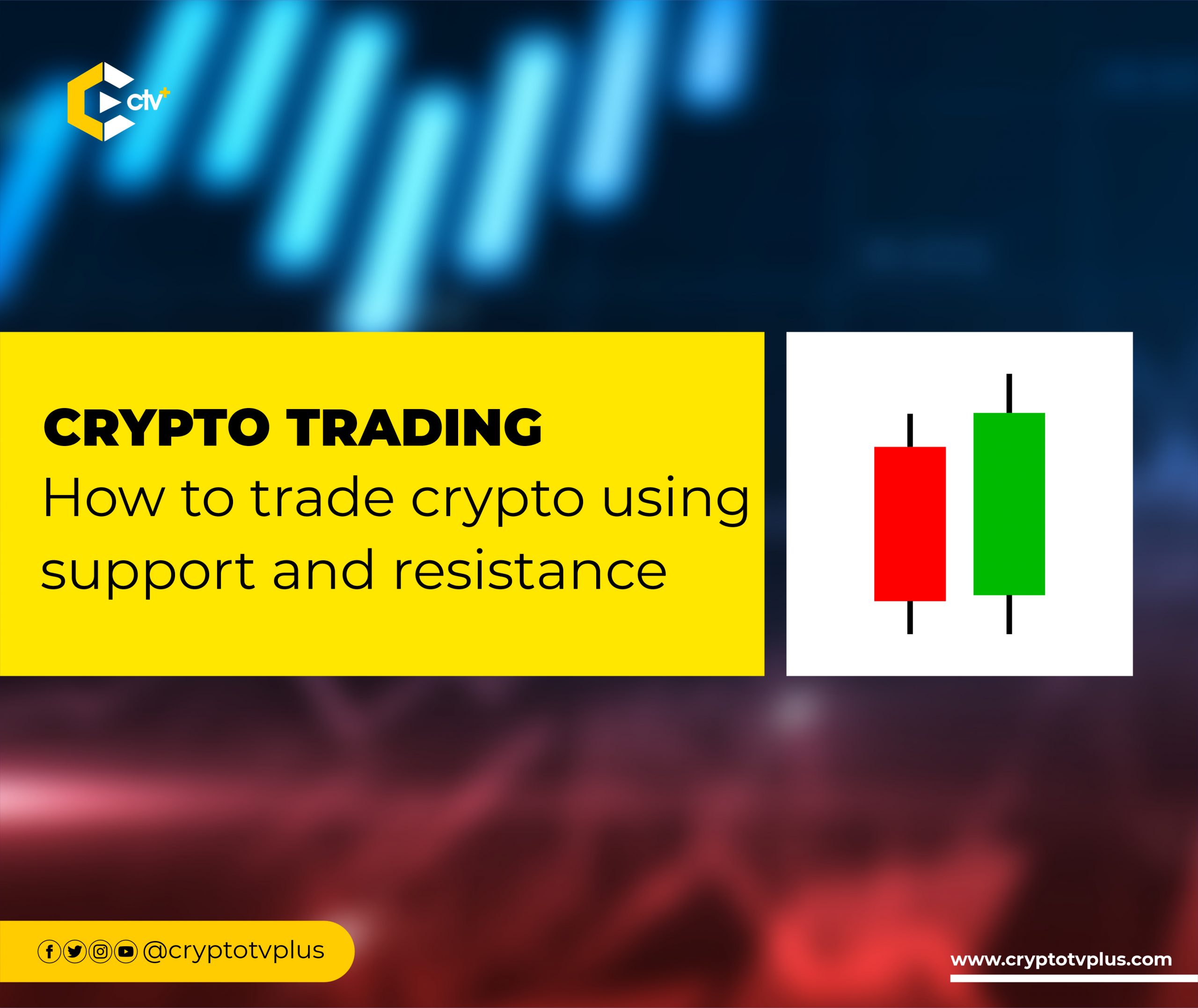Education
How to Trade Crypto Using Support And Resistance

Support and resistance are tools used in technical analysis. They are the key tools used in observing market trends and evaluating the supply and demand of crypto. They represent the current upper and lower price limits for an asset which are indicated as horizontal lines on a price chart.
Support in trading is a level that is below the current price where the demand from buyers is greater than the supply from sellers preventing the price from falling further. At the support level, traders are more willing to buy as they find the price attractive and believe it may not decline further. On the contrary, Sellers are reluctant in selling because they presume that the market has declined enough and there may be a need for a rebound.
Conversely, resistance is the opposite of support. It is a level where the impact of sellers outweighs that of buyers, halting the price from going up.
It occurs when sellers keep increasing while buyers are less encouraged to buy due to the price surge. This leads to sellers surpassing the buyers, making the price fall thereafter.
Technical analysts use support and resistance in pinpointing areas of interest on a price chart. Support and resistance are key areas to consider in practicing proper risk management. Being able to identify these areas can bring about a beneficial trading opportunity.
Usually, when the price reaches a level of support or resistance, it can either bounce off or push through it and proceed in the particular direction of the trend.
Entering a trade when it is near a level of support or resistance can be a good strategy because of the relatively close invalidation point. If there is a breach in the area and the trade gets invalidated, traders can retreat with a small loss.
In this regard, the further the entry is from the level of support or resistance, the further the invalidation point.
Also, it must be noted that a broken area of support can change to an area of resistance and vice versa when it is retested. This is sometimes referred to as a support-resistance reversal.
How to find support and resistance levels
Some of the methods used in finding support and resistance levels include:
1. Highs and Lows
One of the regular methods of finding support and resistance levels is by assessing the highs and lows at specific periods. The high is a sign that the highest price points are hit during a rebound while the low is an indication that the minimum price points have been reached during a downward trend.
When specific assets follow the same lows and highs, they are usually called strong support and resistance levels, respectively.
2. Moving Average
The moving average (MA) indicator is another commonly used method for finding support and resistance zones. Traders use it to find long-term or short-term support and resistance levels. Moving averages are of different types.
They can be either short like 10-day, 20-day, 50-day moving averages or long like 100-day, 200-day moving averages. Ideally, traders looking for quick profits make use of shorter moving averages while long-term traders opt for longer moving averages.
3. Trendline Indicator
Another frequently used strategy is drawing a trendline across the price chart for a currency within a specific period. A trendline drawn across the high price point shows resistance while a trendline fitted across the low price point indicates support.
How to draw support and resistance lines
Drawing the support and the resistance lines is an important aspect for any crypto trader. To get started with this, using a good charting tool like TradingView is essential.
Find suitable time frames
The first thing to note before drawing the support and resistance lines is making clear the objectives. In a short-term trade, time frames below 6 months are enough in assessing support and resistance. While long-term traders may prefer time frames of at least 12 to 18 months in their analysis.
Identify price zones
There will be several price hikes and drops during the specific time frame which is an indication of high-volume trading activity. Usually, these price levels are a reflection of previous support and resistance levels.
Depending on the determined time frame, finding three or more of these price levels will give a fair understanding of how the currency or asset has performed.
Drawing Support and Resistance Lines
Draw a horizontal line to connect the price zones. When price zones are ascending in a triangle formation, the horizontal line is the resistance while the horizontal line is the support for price zones in a descending triangle formation.
In Conclusion
Crypto trading is widely known for its high volatility. New traders without a strategic approach may incur a big loss. Using support and resistance as strategies play an important role in countering the market volatility for higher profits.
It is then essential to master how to identify the support and resistance levels in maximizing profits when trading. Making use of a quality charting tool may further help in the accuracy of these strategies.
Read Also:
What do you think of this article? Share your comments below.

























Pingback: How to Trade Crypto Using Support And Resistance by Micah Bamigboye – CryptoTvplus Events: NFT, DeFi, Bitcoin, Ethereum, Altcoin Events
Pingback: NEAR Protocol with Caerus Ventures, leads a new $100 million VC fund |
Pingback: What you should know about MACD | CryptoTvplus: DeFi, NFT, Bitcoin, Ethereum Altcoin, Cryptocurrency & Blockchain News, Interviews, Research, Shows